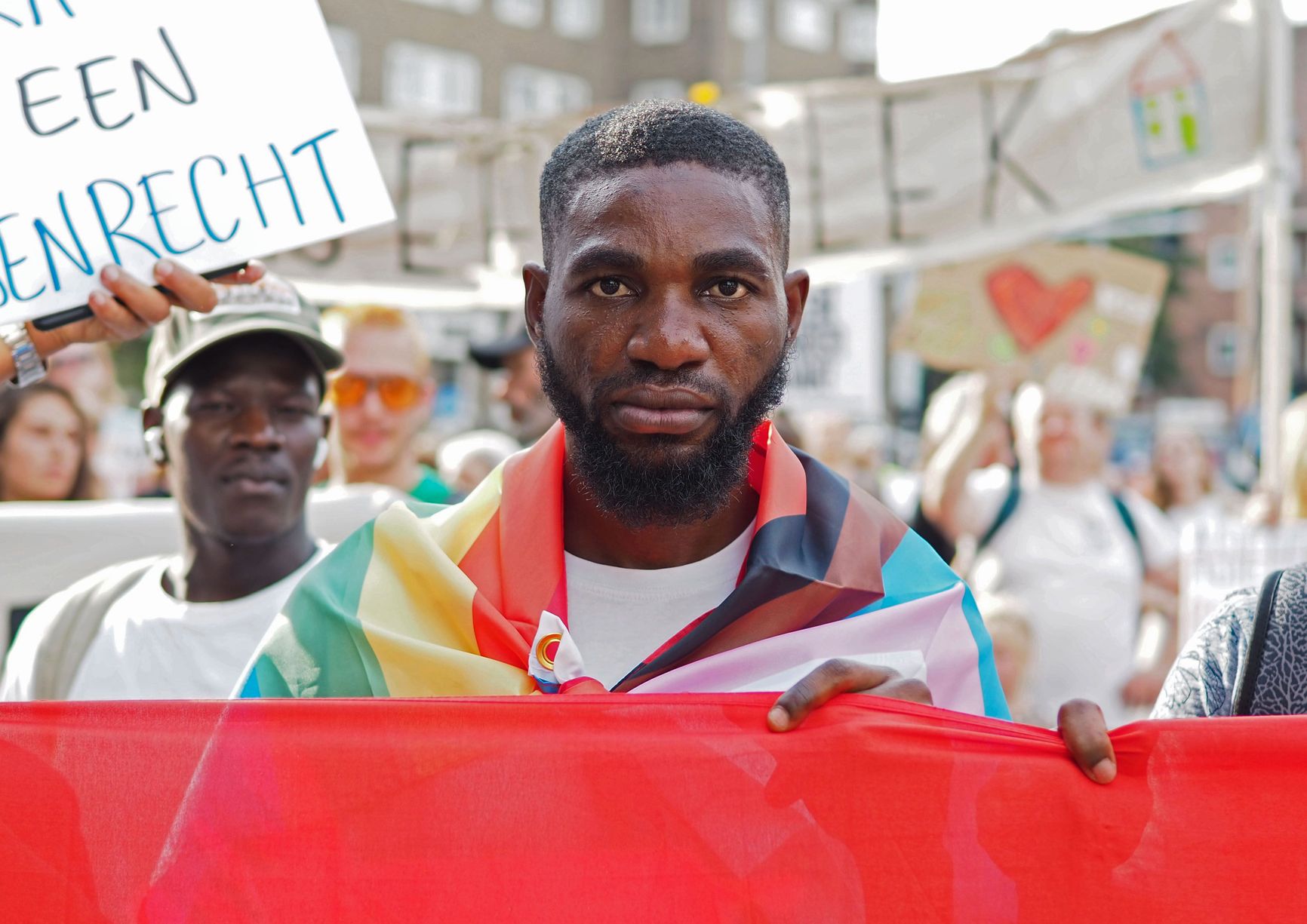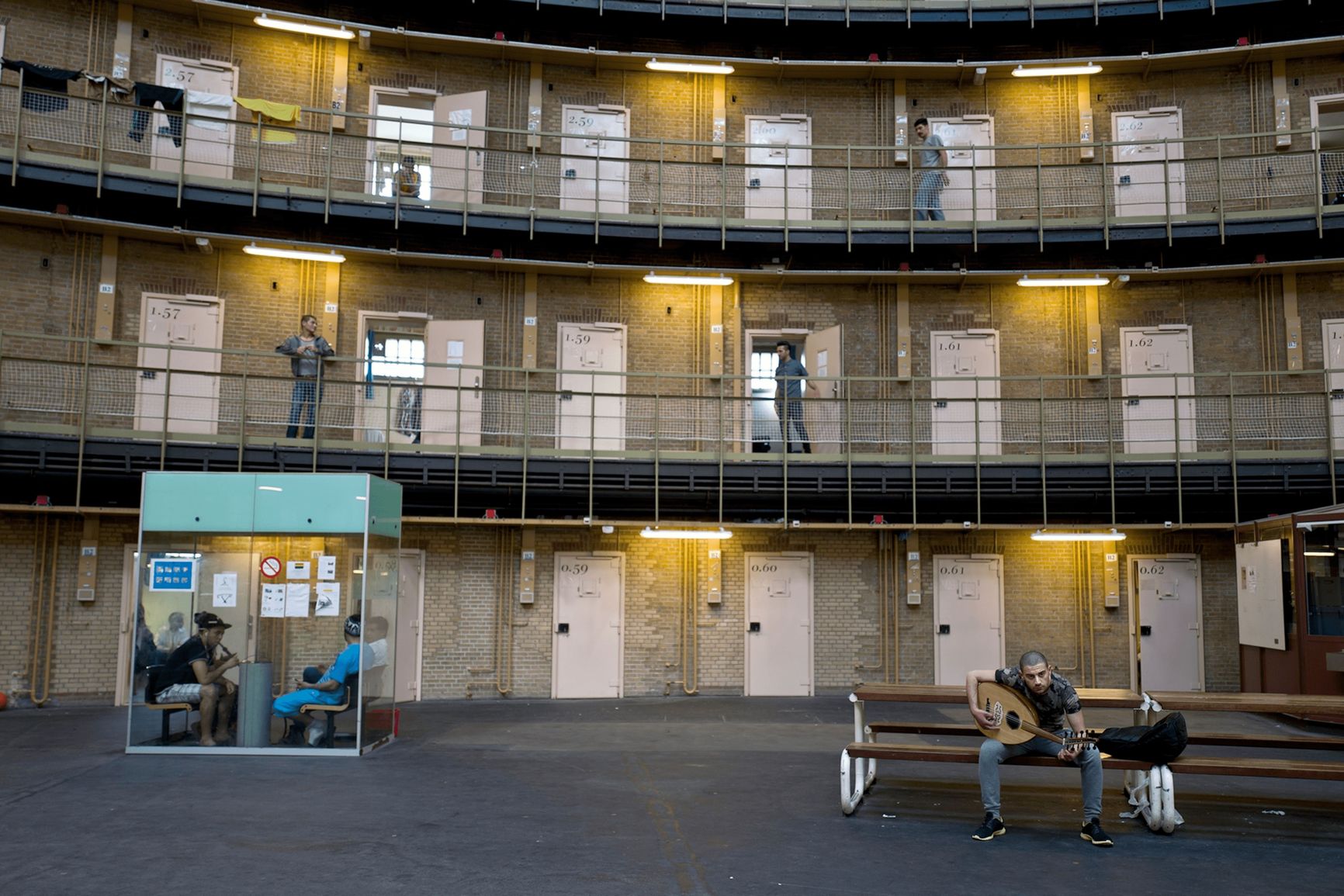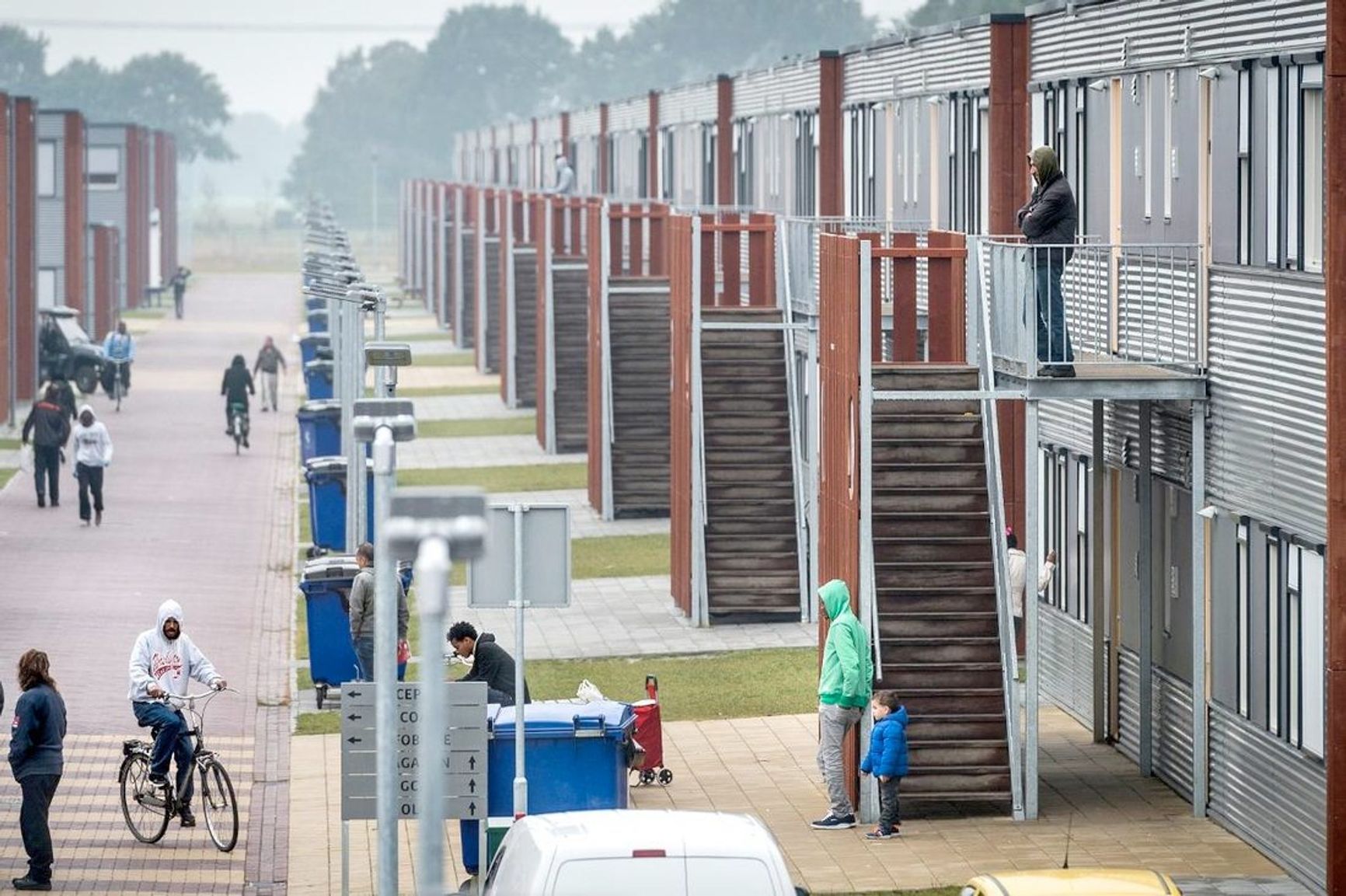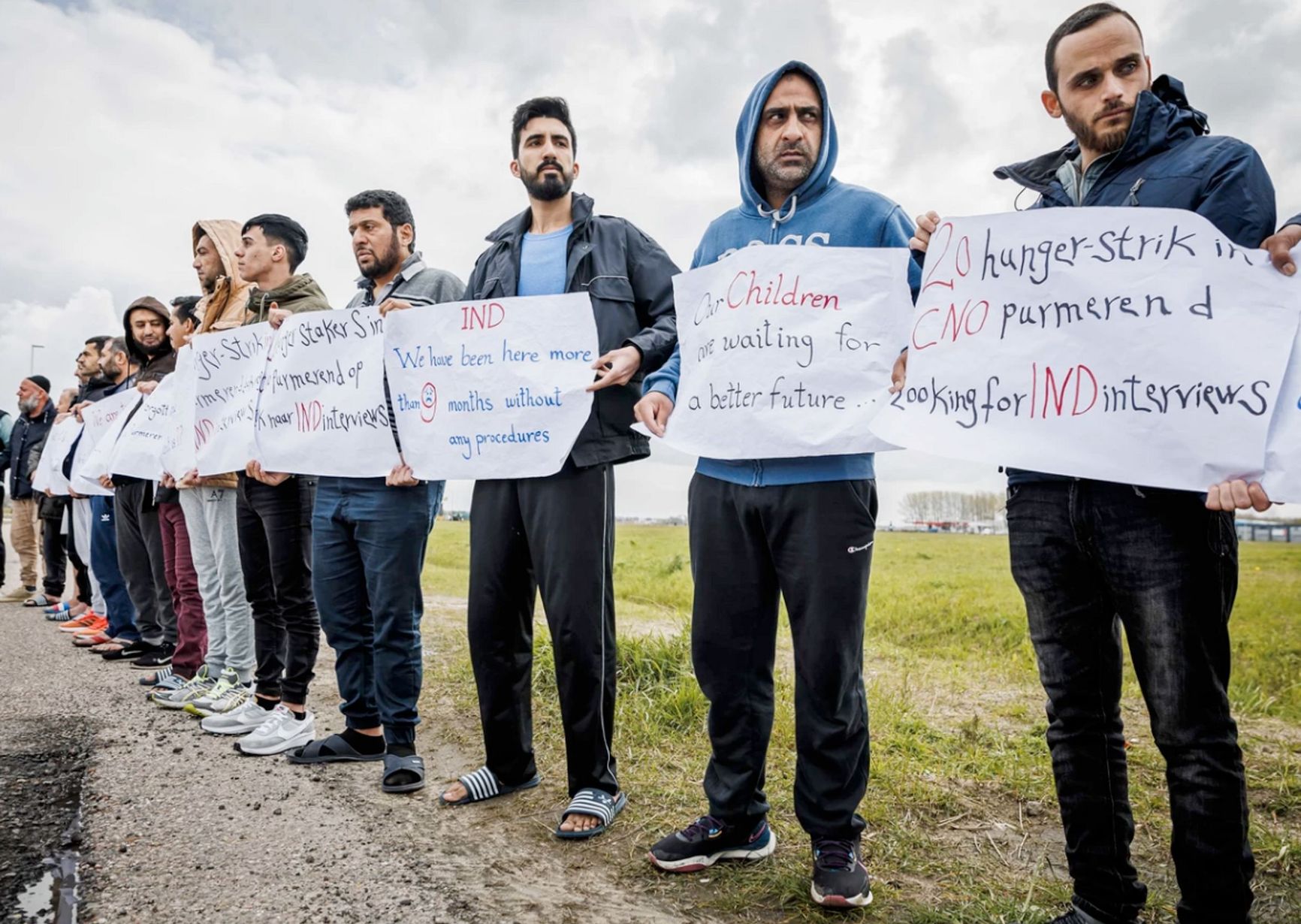

In June, the ruling coalition in the Dutch government collapsed amid disputes over migration policy, with the far-right Party for Freedom withdrawing after others refused to support its proposals for tighter policies. The country’s asylum system has been in crisis for years and reception centers remain overwhelmed by the number of arrivals. Despite having the highest asylum approval rate in Europe, the Netherlands also has the slowest processing times on the continent. As a result, arrivals often spend years enduring unbearable conditions in refugee camps while waiting for a decision on their case. Some don’t make it: between 2019 and 2023, there were 26 suicides in the camps. Asylum seekers told The Insider how they spend months in isolation, unable to work or to access adequate medical and psychological care.
Content
Roots of the crisis
Efforts to solve the problem
How asylum applications are reviewed
Life inside the camps
Mental health support
“We had someone who found a dead rat somewhere and pickled it — that was his art. Some people hear voices, others have hallucinations. The stress of living in such a shelter, especially for those with a history of aggression, often ends in violence,” says Polina, a 36-year-old trans woman, while describing life in a Dutch refugee camp.
Polina spent a month at the Ter Apel reception center, followed by more than two years at the Echt camp in the southern province of Limburg. “It’s considered a relatively good camp,” she says. “It has a reputation as the place they send people who complain a lot — so that they stop asking questions.”
The biggest challenge asylum seekers face in the Netherlands is uncertainty, and decisions on individual cases can take years to arrive. In the meantime, opportunities to work are extremely limited. Camp residents are cut off from society, and renting housing is not allowed until refugee status is granted. In Polina’s case, at least, things eventually turned out well: she was granted asylum.
COA — Centraal Orgaan opvang asielzoekers (lit. Central Agency for the Reception of Asylum Seekers)
The main thing people have to deal with in the Dutch asylum system is uncertainty
The system is unable to cope with major influxes of refugees, and when such instances occur, the reception center in Ter Apel receives far more people than it can accommodate. When that happens, many asylum seekers are placed in temporary camps, where they often remain well past the legal time limit before finally being transferred to permanent facilities. These temporary centers are frequently nothing more than sports gymnasiums lined with beds, offering no privacy or proper amenities.
In 2022, Ukrainian refugees at a camp in the municipality of Ede complained about harsh conditions. They were housed in cramped military barracks without kitchens. While there, they were denied medical care, and their children were offered school lessons only twice a week instead of five. A nearby active military base meant they were regularly forced to hear gunfire.
Between 2019 and 2023, 26 people died by suicide in Dutch refugee camps. According to LGBT Asylum Support, five of them were LGBTQ people. Among those who took their own lives in recent years were Moldovan citizen Katya Mikhailova, and Russian nationals Hina Zakharova, Antonina Babchenko, Mikhail Zubchenko, and Alisa Serova. Queer refugees, in particular, fear deportation and often give up without appealing an initial denial of asylum.
The problems in the camps are symptomatic of a broader crisis that right-wing politicians in the Netherlands call a “migration crisis,” and which the progressive opposition characterizes as a “reception crisis.” The right blames global trends and the country’s lack of border strictness; their opponents point instead to administrative failures and the government’s inability to make effective use of available resources.
Roots of the crisis
According to data from the Central Agency for the Reception of Asylum Seekers (COA), as of May 2025 around 70,000 people were living in Dutch refugee camps, 50,000 of whom are men. The largest number of arrivals come from Syria, followed at a considerable distance by people from Turkey, Iraq, Eritrea, and Somalia. According to reports from the Immigration and Naturalization Service (IND), 15,000 to 18,000 asylum cases are processed each year — while annual applications range between 25,000 and 30,000.
COA — Centraal Orgaan opvang asielzoekers (lit. Central Agency for the Reception of Asylum Seekers)

Bright, a refugee from Nigeria, protests conditions for asylum seekers, September 2022
The Netherlands has, on the one hand, the highest asylum approval rate in Europe — and, on the other, the longest waiting times. Until recently, the law required asylum cases to be processed within six months, and people were usually assigned to a camp within two weeks of applying. But in September 2022, the official waiting period was extended to 15 months, as the immigration service could no longer keep up with the volume of applications. Yet even this extended timeframe is rarely met, and most asylum seekers end up waiting around two and a half years for a decision.
COA — Centraal Orgaan opvang asielzoekers (lit. Central Agency for the Reception of Asylum Seekers)
The Netherlands stands out in Europe for having both the highest rate of positive asylum decisions and the longest delays in delivering those decisions
In May 2025, the European Court ruled that the Netherlands’ decision to extend asylum processing times was unlawful and ordered the government to at least speed up the review of cases filed before September 2022.
The roots of the problem go back to 2017, when the government cut staffing levels at the immigration service. In 2022, the agency announced it had hired more than 400 new employees, but added that “training takes nine months, so the pressure on the system won’t ease quickly.” When The Insider inquired as to whether the newly trained staff had helped speed up decision-making in the two years since, the agency did not respond — and the original statement later disappeared from the agency’s website (though it remains available in an archived version).
In 2023, the immigration service admitted that it was unable to process incoming applications within the time limits set by the law. The agency said it was working to ease the burden on its staff by shifting some responsibilities to other organizations.
COA — Centraal Orgaan opvang asielzoekers (lit. Central Agency for the Reception of Asylum Seekers)
The immigration service has stated it is unable to process incoming applications within the time limits established by law
The crisis is further compounded by internal chaos at the agency itself. For example, lawyers from a special unit that was set up in 2020 to clear the backlog of cases reported that, due to scheduling issues, they had not received video recordings of asylum interviews. Instead, they were offered documentary films about the countries that the asylum seekers had come from.
COA — Centraal Orgaan opvang asielzoekers (lit. Central Agency for the Reception of Asylum Seekers)

Former prison De Koepel, repurposed as a refugee reception center
Since 2022, refugees in the Netherlands have been required to pay for integration courses. These are funded through loans, and if the applicant fails to pass the exam, the cost must repaid — with a fine added on top. As of February 2025, the total amount of such “integration” loans issued to asylum seekers had reached €27 million, and the fines for failed exams amounted to €2.3 million. The European Court eventually banned the fines, but the system of mandatory paid courses remains in place.
The far-right Party for Freedom, which won the 2023 parliamentary elections in the Netherlands, sought to tighten migration laws. Marjolein Faber, the minister for asylum policy in the coalition government, proposed replacing permanent residency for refugees with a temporary stay permit capped at three years. The renewal of this permit would depend on the situation in the refugee’s country of origin.
Faber also proposed eliminating family reunification as a path to legal residency. However, on June 3, 2025, the Party for Freedom withdrew from the governing coalition, triggering the collapse of the government and raising the prospect of snap elections. The reason for the party’s exit was its disagreement with coalition partners — specifically on matters of migration and asylum policy.
Efforts to solve the problem
The Reception Distribution Act, passed in January 2024, aims to address the refugee reception crisis. It requires all municipalities in the Netherlands to host asylum seekers in proportion to their population size and income levels. Currently, reception centers exist in only 194 out of the country’s 345 municipalities.
COA — Centraal Orgaan opvang asielzoekers (lit. Central Agency for the Reception of Asylum Seekers)
Reception centers for asylum seekers exist in only 194 of the Netherlands’ 345 municipalities
The primary goal of the law is to relieve pressure on the Ter Apel center. This facility receives asylum seekers who arrive in the Netherlands by land, though if the reception point at Amsterdam’s Schiphol Airport is overwhelmed, Ter Apel can take in asylum seekers arriving by air as well. Under current rules, refugees should not stay in Ter Apel longer than two weeks; however, in practice their stay is often prolonged. Staff at the center are generally reluctant to offer assistance, expecting that people will be transferred quickly to permanent facilities.
“Trying to get medical help at the primary camps leads nowhere — they delay assistance until you're sent to the next camp,” says Polina. “It’s important to understand that when you come here, you need to bring a supply of medication with you.”
COA — Centraal Orgaan opvang asielzoekers (lit. Central Agency for the Reception of Asylum Seekers)

Primary reception center in Ter Apel
New refugee reception centers could ease the strain on Ter Apel, but attempts to build them often fail due to local protests. One of the organizers of the demonstrations against a planned center in the town of Elst told De Telegraaf that at least 80% of the town’s residents support the protest. “For years they haven’t built any housing for us…and now they’re ready to build a refugee center right away? Let’s pass the law, but at least spread the refugees across several locations within the municipality,” the protest organizer said.
COA — Centraal Orgaan opvang asielzoekers (lit. Central Agency for the Reception of Asylum Seekers)
Attempts to build new camps often fail due to public opposition
COA’s strategy is to build large-scale camps designed to accommodate several hundred people. In Elst, for example, the plan was to house 800 refugees. But many locals believe this would fundamentally change life in their town — and not for the better. Xenophobic slogans are common among protesters, with many portraying migrants as criminals by default. In Elst, posters read: “No to the reception center — keep Elst safe.”
How asylum applications are reviewed
No refugee knows when their interview with the authorities will be scheduled. According to The Insider’s sources, it is especially frustrating when people who arrived in the Netherlands later are called in for interviews and receive decisions faster than those who have been waiting in the camps much longer.
COA — Centraal Orgaan opvang asielzoekers (lit. Central Agency for the Reception of Asylum Seekers)
No refugee knows when their interview with the authorities will be scheduled
This inconsistency is linked to the way the immigration service processes cases: each application must be reviewed by qualified experts, and the agency waits until it has a group of similar cases before assigning them. Then, specialists assess each application individually, evaluating the credibility of the applicant’s story and the risks they may face.
At times, the immigration service suspends the review of applications from certain countries altogether. This happens when the situation in a given region becomes, in the view of experts, too complex to assess. In 2024, for instance, no decisions were made for six months on applications from Sudan or from people fleeing the zone of the Israeli-Palestinian conflict.
Major political shifts in applicants’ home countries can also affect the agency’s approach. After the fall of the Assad regime, the Netherlands temporarily stopped processing cases from Syrian refugees, hoping the new government would be more humane — and that people could eventually be sent back.
Life inside the camps
Asylum seekers in the Netherlands currently endure stays of up to 30 months in reception camps. There’s no requirement to remain in the camps full time — people can live with friends or unofficially rent housing — but they must formally give up their place in the camp and check in once a week with the authorities. Even so, isolation and forced idleness remain major challenges for many.
COA — Centraal Orgaan opvang asielzoekers (lit. Central Agency for the Reception of Asylum Seekers)
Asylum seekers in the Netherlands may have to spend up to 30 months in camps
To reduce the effects of isolation, people who speak the same language and come from countries not in conflict with one another are housed together. The same approach applies to LGBTQ+ refugees: where possible, separate buildings are assigned to them, and if that isn’t feasible, queer individuals are placed in shared rooms with one another.
LGBTQ+ residents often face everyday homophobia and transphobia — sometimes from other refugees, but also from staff. The Insider’s interviewee Polina believes the transphobia she encountered was due more to ignorance than malice. She reported one such incident involving camp staff to Sandro Kortekaas, the founder of the group LGBT Asylum Support. Kortekass drew attention to the issue, and the camp administration later apologized to Polina.
COA — Centraal Orgaan opvang asielzoekers (lit. Central Agency for the Reception of Asylum Seekers)
LGBTQ+ people in the camps face everyday homophobia and transphobia — including from staff
Another Insider source, Salim, described how management responded quickly to routine problems and conflicts in the camp. If a fight broke out, at least staff members and security guards would intervene. Complaints about roommates were also handled swiftly. For example, when one of Salim’s acquaintances reported being pestered by a neighbor’s intrusive questions about his sexuality, the men were placed into different rooms.
Solving the problem of enforced inactivity is far more difficult. For the first six months after submitting an initial asylum application, refugees are not allowed to work. Even after that, language barriers, limited social networks, applicants’ lack of information about the job market, and the intricacies of Dutch labor laws complicate the process. Employers must apply for a work permit on behalf of the asylum seeker, and often a personal identification number (BSN) is required. Many asylum seekers who do find jobs end up working in retail chains performing physically demanding, low-skill tasks.
COA — Centraal Orgaan opvang asielzoekers (lit. Central Agency for the Reception of Asylum Seekers)
Asylum seekers are often hired for physically demanding jobs
For a long time, the only available work involved doing odd jobs for the camp administration — helping with cleaning and maintenance. Refugees could earn a small bonus on top of their standard benefits for putting in nine hours a week as janitors or dishwashers. The Insider’s interviewees had differing views on this arrangement: Polina felt the pay was too low to justify the work, while Salim was simply glad to have something to do — the money, he said, was just a welcome extra.
Camps also offer group activities: Dutch language lessons with local volunteers, movie screenings, board games, and orchestra rehearsals. But overall, opportunities to stay occupied are few and far between. The rest of the time, people are left to their own devices — which, according to those interviewed by The Insider, takes a heavy mental toll.
Mental health support
In theory, psychological help is available at all camps, but in practice, it is often ineffective. Polina described the appallingly low qualifications of the person assigned to her:
“They don’t want to spend too much on healthcare. Before the recent suicides, the psychological support at the camp was horrible. They had me talking to someone who wasn’t even a real professional — not a psychologist or a therapist. He called himself an assistant. He spoke through an interpreter and asked everyone from Russia the same question about their ‘girlfriend vodka.’ It went like this: ‘So how did you deal with your problems in Russia? I guess you had a girlfriend — vodka?’ And this, after he’d already asked if I drank alcohol and knew I didn’t.”
Polina and a group of fellow female refugees filed a complaint against the unqualified staffer. Afterward, they were assigned new, certified professionals. Polina continued working with her therapist until she left the camp. She believes that experience — and age — were key in helping them advocate for themselves.
“You have to understand, we were all around thirty. We had lived in Russia and knew how to demand what we needed. But trans people with the same level of stress, who end up in the camps at 18 or 20, don’t know how to do that yet. For them, this experience can be deadly.”
COA — Centraal Orgaan opvang asielzoekers (lit. Central Agency for the Reception of Asylum Seekers)

In critical moments, when specialized mental health support is urgently needed, such help is often unavailable. The suicide of Katya Mikhailova was directly tied to the Dutch authorities’ inability to provide the necessary care for her mental health conditions.
Community support and simple friendships remain the last refuge for people trapped in the Dutch refugee camp system. However, these measures alone are insufficient to relieve the stress, shorten the long waiting periods, or overcome the prejudice that exists among both camp staff and fellow residents.
COA — Centraal Orgaan opvang asielzoekers (lit. Central Agency for the Reception of Asylum Seekers)